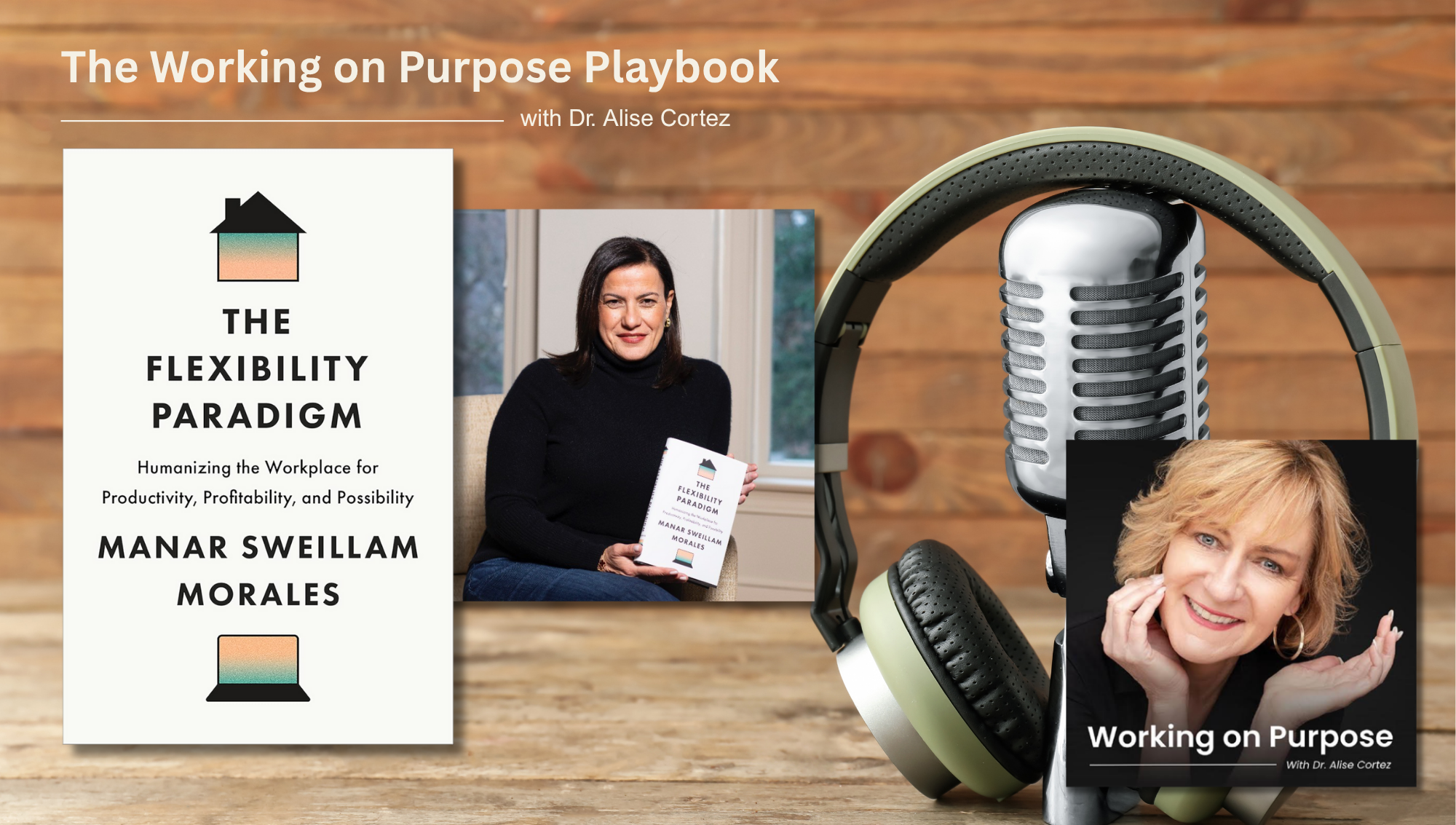Guest: Manar Morales
Book: The Flexibility Paradigm: Humanizing the Workplace for Productivity, Profitability, and Possibility
Flexibility isn’t a perk—it’s a performance strategy. When done well, it unlocks productivity, engagement, innovation, and a stronger, more inclusive culture. When done poorly, it gets blamed for problems that actually stem from weak implementation and misaligned norms.
“Flexibility has a strong business case… and it unlocks the full potential of your people.” — Manar Sweillam Morales
Why Flexibility, Why Now
- Strategic, not soft. Flex drives talent attraction/retention, diversity, engagement, sustainability, and profitability.
- A generational reset. Millennials and Gen Z will make up the majority of the workforce by 2030; they’re digital-first and expect flexibility with accountability.
- Experience over policy. Policies don’t bring people back—great experiences do.
Common Pitfall: Blaming Flex Instead of the Rollout
Organizations often “try flex” without the structures, skills, or culture to support it. The issue isn’t flexibility; it’s the absence of clear principles, leader enablement, and consistent practices.
Holistic Flexibility > Hybrid Only
Hybrid focuses on where work happens. Holistic flexibility also considers when, how, and by whom work gets done—and equips leaders and teams to succeed across all four.
The Flex Success Framework (5 Rs)
- Reflect: Clarify the why and the outcomes you’ll measure (talent, engagement, inclusion, retention).
- Reimagine: Align values, vision, and flexibility principles. Decide what you want to be known for.
- Redesign: Choose the right flex options (location, hours, compressed weeks, roles) backed by clear standards.
- Reintegrate: Embed flex into culture—norms, tools, leader training, team agreements, and rituals for connection.
- Reinforce: Track KPIs, learn, and iterate. Treat flex as an operating system, not a one-time policy.
Make It Work (Leader Playbook)
- Design for connection: Use intentional “anchor days,” shared rituals, and collaboration windows.
- Set clarity and fairness: Define expectations, outcomes, and advancement paths that don’t penalize flexible roles.
- Name ownership: Designate a flex program owner and, if possible, a cross-functional “State of Flex” council.
- Train managers: Equip them to set outcomes, coach autonomy, and model trust.
- Listen continuously: Use surveys/focus groups to refine practices with real employee input.
Your Call to Action:
🎥 Watch the full episode on Youtube HERE
🎧 Or listen to it here:
🔹 Spotify
🔹 iHeart
💬 Join the conversation: How have you incorporated flexibility into your workplace culture? And what benefits are you seeing as a result? Drop a comment below.
📩 If you find value in these insights, hit ‘Subscribe’ to stay connected and receive fresh episodes straight to your inbox!




